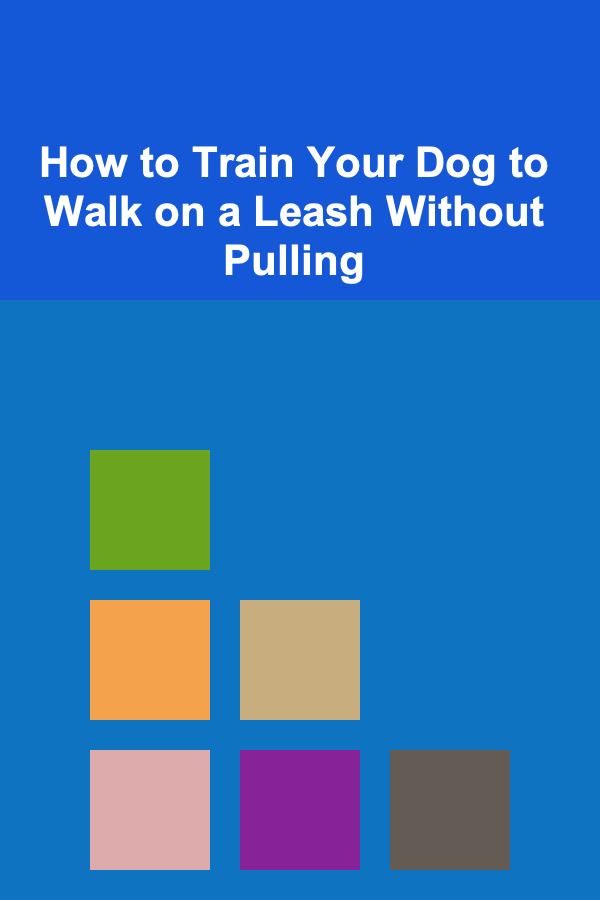
10 Tips for Attracting Pollinators to Your Small Urban Garden
ebook include PDF & Audio bundle (Micro Guide)
$12.99$5.99
Limited Time Offer! Order within the next:
Not available at this time

Creating a thriving, vibrant garden in an urban environment can seem like a challenge, but with the right strategies, it is entirely possible. One of the most rewarding goals for any gardener is attracting pollinators to their garden. Pollinators, such as bees, butterflies, hummingbirds, and other insects, play a vital role in the reproduction of many plants by transferring pollen from one flower to another. Without them, many of the fruits, vegetables, and flowers we rely on would not be able to reproduce.
Urban gardens are often limited by space and resources, but they can still become haven for pollinators if planned thoughtfully. The key is to provide a diverse and inviting environment that appeals to these hardworking creatures. Whether you have a balcony, a rooftop, or a small plot in a shared community garden, there are several ways to make your urban garden more pollinator-friendly.
In this article, we will explore 10 effective strategies to attract and support pollinators in your small urban garden. These tips are designed to work in a variety of urban settings, offering practical and creative solutions for all gardeners.
Choose Native Plants
One of the most effective ways to attract pollinators to your garden is by planting native plants. Native plants have evolved alongside local pollinators and are more likely to provide the nectar and pollen that these insects and birds prefer. They also tend to be more resilient to local pests and diseases, making them easier to care for in an urban environment.
Why Native Plants Matter:
- Adaptability: Native plants are well-suited to the local climate and soil conditions.
- Biodiversity: Native plants support local ecosystems, providing food and shelter for a variety of pollinators.
- Less Maintenance: They require less water, fertilizer, and pest control compared to non-native species.
Examples of Native Pollinator Plants:
- Bee Balm (Monarda spp.)
- Coneflower (Echinacea spp.)
- Milkweed (Asclepias spp.)
- Black-eyed Susan (Rudbeckia hirta)
Before you choose your plants, do a bit of research to find the native flowers that will thrive in your area and attract the types of pollinators you want to support.
Provide a Variety of Flowers with Different Bloom Times
Pollinators need access to food throughout the year. By choosing plants with staggered blooming periods, you can ensure that there is always something in flower to attract pollinators. This also helps sustain your local pollinator population, as they will have a continuous food source from spring through fall.
Bloom Time Strategies:
- Early Bloomers: Crocus, snowdrop, and hellebores are great for early spring.
- Mid-Spring to Summer: Lavender, coneflower, and bee balm will provide color and nectar through the warmer months.
- Late Bloomers: Asters, goldenrod, and sedum provide nectar and pollen as the weather cools down in the fall.
Aim for a balance between early, mid, and late bloomers to create a garden that supports pollinators year-round.
Plant in Clusters or Patches
Pollinators, particularly bees, are more likely to visit your garden if you plant flowers in groups or clusters rather than scattered across the space. This helps the pollinators find food more easily and encourages them to linger longer.
Why Clusters Work:
- Easier to Spot: Pollinators can see groups of flowers more easily from a distance.
- Maximizes Pollinator Efficiency: Pollinators are more likely to stay in one area if there are multiple flowers offering nectar and pollen.
- Attracts Multiple Pollinator Species: Different pollinators are attracted to different types of flowers, so grouping a variety together can attract more species.
Create small clusters of flowers by planting in groups of three or more of the same type of plant. Be sure to mix flowers of different shapes, sizes, and colors to appeal to a wide range of pollinators.
Avoid Pesticides and Herbicides
Many pesticides and herbicides are harmful to pollinators, including bees and butterflies. While these chemicals are designed to protect plants from pests, they can also poison the very insects that help those plants reproduce. In an urban garden, the impact of chemicals can be even more significant due to the smaller scale of the environment.
Tips for Organic Pest Control:
- Hand-pick pests: Remove insects like aphids manually or use a strong stream of water to dislodge them.
- Introduce beneficial insects: Ladybugs, lacewings, and predatory beetles can help control pests naturally.
- Companion planting: Certain plants, like marigolds or basil, can help repel pests when planted alongside vulnerable crops.
By eliminating harmful chemicals, you'll provide a safer environment for pollinators and other beneficial insects.
Create Water Sources
Just as pollinators need food, they also need water. Including a water source in your garden, such as a shallow birdbath, a small fountain, or a natural pond, will encourage pollinators to visit regularly.
Water Feature Tips:
- Shallow Water: Bees and butterflies prefer shallow water, so ensure that the water level in your birdbath or fountain is no higher than an inch or two.
- Rocks and Twigs: Add rocks or twigs in the water feature so pollinators have a place to land without fear of drowning.
- Refresh Regularly: Keep the water clean by changing it regularly to avoid mosquito larvae buildup and to ensure it remains fresh for the pollinators.
Provide Shelter and Habitat
Pollinators need safe places to rest, hide from predators, and nest. By providing shelter in your urban garden, you'll offer a more complete environment for pollinators to thrive. Here are a few ideas:
- Bee Hotels: These are man-made structures that provide nesting spaces for solitary bees, which are excellent pollinators.
- Butterfly Houses: These small structures can provide a protected place for butterflies to rest during the night or during unfavorable weather conditions.
- Leaf Piles and Brush Piles: These offer shelter for various insects and are particularly beneficial for overwintering pollinators.
If you have limited space, consider hanging a small birdhouse or creating a small pile of sticks and twigs for a natural habitat.
Use Color and Fragrance to Attract Pollinators
Pollinators are attracted to specific colors and scents, so when planning your garden, consider both the visual and aromatic appeal of your plants. Bees, for example, are particularly drawn to blue, purple, and yellow flowers, while butterflies tend to prefer vibrant reds, oranges, and pinks.
Color and Fragrance Tips:
- Bright Colors: Plant flowers with bright, bold colors, like zinnias, marigolds, and sunflowers, to catch the attention of pollinators.
- Fragrant Flowers: Pollinators like bees and butterflies are drawn to fragrant flowers. Consider adding plants like lavender, jasmine, and lilac to your garden.
- Avoid Overpowering Scents: While fragrance is important, too much of a strong scent can sometimes deter pollinators, so balance is key.
Best Fragrant Flowers:
- Lavender: A favorite of bees and butterflies.
- Basil: Its aromatic leaves can attract pollinators when grown in flower beds.
- Mint: Bees love mint flowers, and the plant's fragrance will draw them in.
Plant a Variety of Flower Shapes and Sizes
Pollinators are drawn to different types of flowers based on their morphology. Bees, for example, tend to prefer open, flat flowers that they can easily land on, while hummingbirds are attracted to tubular flowers that allow them to insert their long beaks and access nectar.
Flower Shape Strategies:
- Open, Flat Flowers: These are ideal for bees and butterflies. Examples include daisies, asters, and cosmos.
- Tubular Flowers: Hummingbirds love these types of flowers. Consider planting trumpet vine, foxglove, or fuchsia.
- Clustered or Dense Flowers: Flowers that cluster together, like lavender and salvia, are great for attracting a wide variety of pollinators.
By offering a variety of flower shapes and sizes, you'll ensure that your garden can support different types of pollinators.
Go Organic and Minimize Lawn Space
Lawns often offer little in the way of habitat or food for pollinators. By replacing sections of your lawn with pollinator-friendly plants, you can increase the biodiversity in your garden. Additionally, maintaining an organic garden that avoids synthetic fertilizers and pesticides will help preserve the delicate balance necessary for pollinator health.
Lawn Alternatives:
- Wildflower Meadows: Create a small wildflower meadow or patch to replace lawn areas. Wildflowers naturally attract pollinators.
- Ground Covers: Replace traditional grass with ground covers like clover or creeping thyme, both of which are attractive to pollinators.
The less lawn you have, the more space there will be for pollinators to thrive.
Educate and Advocate for Pollinator Conservation
A key aspect of attracting pollinators to your urban garden is spreading awareness about their importance. Talk to your neighbors, friends, and fellow gardeners about the benefits of pollinator-friendly gardening. Advocate for local initiatives that support pollinator populations, such as planting pollinator gardens in public spaces or reducing pesticide use in urban areas.
Ways to Advocate:
- Host a Pollinator Workshop: Offer gardening workshops to teach others about the importance of pollinators and how to create a pollinator-friendly garden.
- Collaborate with Local Organizations: Join local environmental or gardening organizations to advocate for urban biodiversity.
- Share Your Knowledge: Use social media or blogs to share tips and success stories about attracting pollinators.
The more people who understand the importance of pollinators and take action, the better off the environment and our gardens will be.
By implementing these 10 tips, your small urban garden can become a sanctuary for pollinators, enhancing the biodiversity of your space while supporting these essential creatures. As you create a welcoming environment for pollinators, you'll contribute to the overall health and beauty of your urban ecosystem.

How to Manage Your Finances When You Have Multiple Streams of Income
Read More
How to Store Shoes and Boots in a Small Closet
Read More
How to Train Your Dog to Walk on a Leash Without Pulling
Read More
How to Upgrade Your Home's Lighting with Budget-Friendly DIY Projects
Read More
Top Benefits of Growing Your Own Fruits and Vegetables in Your Backyard
Read More
How to Understand the History of Famous Hiking Trails
Read MoreOther Products

How to Manage Your Finances When You Have Multiple Streams of Income
Read More
How to Store Shoes and Boots in a Small Closet
Read More
How to Train Your Dog to Walk on a Leash Without Pulling
Read More
How to Upgrade Your Home's Lighting with Budget-Friendly DIY Projects
Read More
Top Benefits of Growing Your Own Fruits and Vegetables in Your Backyard
Read More